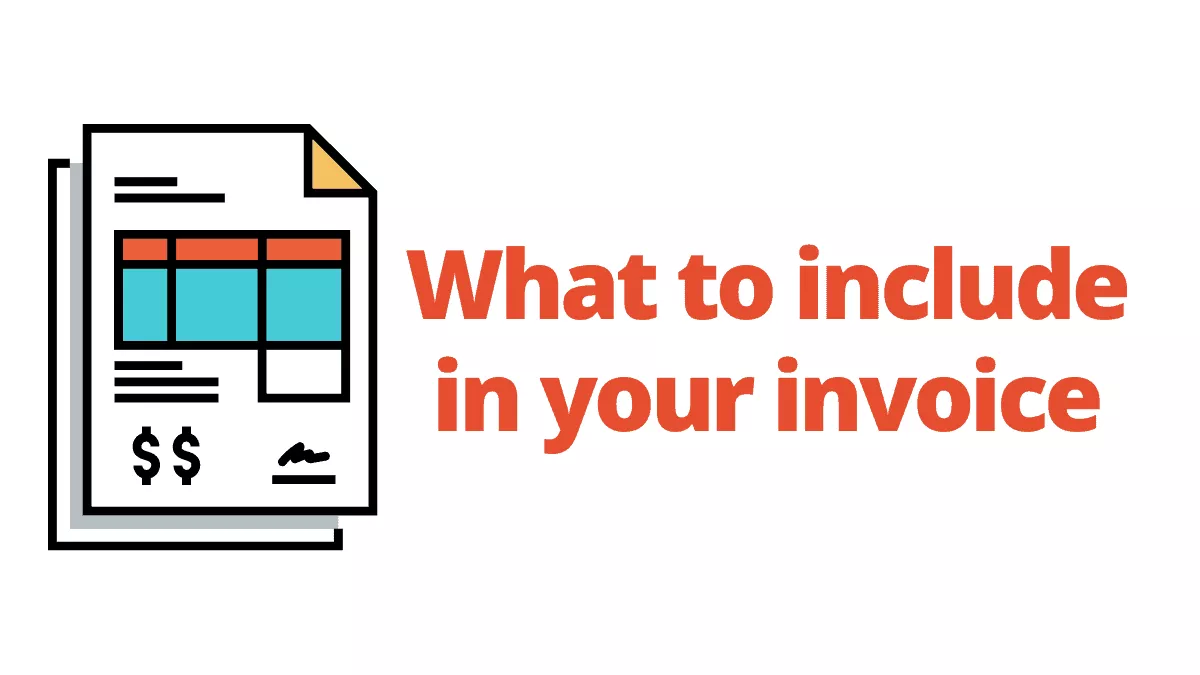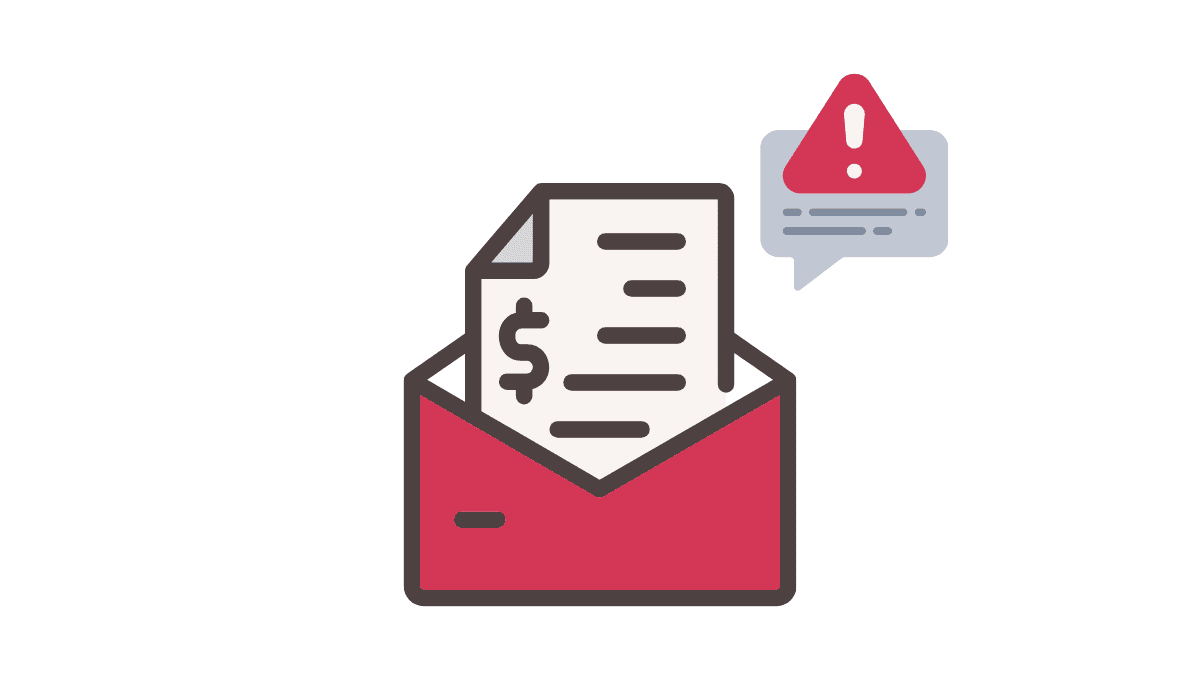Whether you’re a freelancer or a Fortune 500 company, I’m gonna guess you’re in business to make money.
And mastering invoicing is a key part of that process.
To many freelancers, beginners and more seasoned professionals, invoicing can seem intimidating. But no need to worry, we’ve got you covered!
Today, we’ll show you what you need to create a complete invoice to get you PAID. I’ll cover when and how you can send an invoice, common mistakes to avoid and even a bit about invoicing systems!
Let’s go.
Invoices can vary based on the freelancer or invoicing system that made them. Yet most of them have the same key components.
There are different kinds of invoices too, but today we’ll be focusing on a standard invoice.
When you’re creating your own invoice, here’s what you need to make it complete:

The first thing you want to put at the top of your invoice is a professional header. This should include your logo (if you have one), the name of your business, or just your full name.
The header serves as an identifier for your business, and it’s the first thing your clients will see when they review your invoice. It’s also good practice to bold your header for emphasis, so it stands out.
Next, add your contact information. The details themselves will vary, depending on your business, but your email address and website URL are a must.
If you’re a freelancer who works in a different country to your clients’, you might not find it necessary to include your phone number or mailing address. You can include your Skype username instead – plus any other contact details you see fit.
It’s also advised that you write each contact on a separate line, rather than everything on one.
Here’s an example:
Glistening Photography
[email protected]
Glisteningphotos.com
123-456-7890
Next, add in your client’s contact information. After all, you want to be sure you’re sending your invoice to the correct client!
Your client’s contact information will generally include:
Next, add your invoice number.
This is a numerical identifier that allows you to track your invoices. There’s no specific way to do it – you simply need to have it in sequential order, so you can avoid confusion and easily track your invoices.
An example of an invoice number is #0001 with the following invoice number being #0002 and so on. Invoice numbers will help you order your invoices and find them with ease.
The preparation date is the date you sent your invoice to your client. This allows for easy tracking and reference when you’re looking at a client’s payment history.
The due date is when both you and your client have agreed to your invoice being paid. You may have an arrangement with a client to pay you at the end of the month or the end of a project. The due date will reflect this, and let you track if a client is behind on their payment schedule.
As a freelancer, it helps to have multiple payment options. This makes it easier for you to get money for your work and helps your client pay you without any hassle.
In the payment options section, you’ll include the various ways your client can pay you, as well as the necessary information/links.
There are some fantastic online payment options out there. PayPal is a popular option, but there are platforms such as Wise you can check out, which can offer lower rates and better currency exchange if your client is overseas.
Depending on your client, you might also take checks or even bank deposits. Whatever methods are available to you, include them in the invoice and make it as easy as possible for your client to pay you.
If you use PayPal, then adding a PayPal.me link to your invoice can be another way to make it easier for your clients to pay you.
Many freelancers include terms of payment on their invoices, these can include a late fee, a cancellation fee, or any other pertinent information.
While many freelancers do have late fees, they often try their best to get paid on time and avoid enforcing it so that they can maintain the relationship with their clients, which is of utmost importance.
List all the tasks completed for your client so that they’ll know exactly what they’re paying for. It’s advised that you list each task on an individual line so that it’s easy to understand and digest.
Remember, clarity is key!
Once you’ve listed all the services rendered and the cost of each service, list the total to wrap up your invoice. The services rendered make it so that your client understands exactly what they’re paying for and the total amount due is the final amount that they’ll be paying you.
Important Tip
Bold the total amount owed, so it stands out and there’s no confusion about how much the client needs to pay.

The most common practice is to send an invoice by email.
This way there’s a record of your invoice and the correspondence between you and your client.
You can also ask for a confirmation that your client got the invoice as well, for your own personal records.
Whether you do your invoices by hand or create a Word document, save it as a PDF document before sending it to your client so that it cannot be altered. It’s also advised that you write the invoice number and amount in the subject, so you can easily search and find it in case you need it.
The best time to send an invoice is right now!
Haha, just kidding.
The best time to send an invoice depends on your arrangement with your client. If you’re working with a client on a one-time project, the best time is often to send the invoice after the project is completed.
However, if you’re working on multiple tasks/assignments for a client, then you could send an invoice once a month with each item listed. Some freelancers invoice their clients at the end of the month, others at the beginning. It depends on you and your client.
One perk of a ‘cumulative invoice’ is that it simplifies administrative tasks and also keeps everything you’ve done for that client over that particular time period in one place.
In the case of larger projects that require multiple steps, you can invoice them at the beginning for a deposit and again at the end for the final payment. You can also invoice based on milestones agreed upon by you and your client.
The reality is that different clients and projects require different invoicing times, use your judgment and experience to decide on what works best for you, the project, and the client.
Just make sure that at the end of it, you are paid, and your client is happy.

No one likes to be told they’ve gotten something wrong or made a mistake, much less a rookie one. However, whenever you’re learning something new, mistakes are bound to happen.
Here are common invoicing mistakes you want to avoid as a freelancer:
This happens when you’re swamped with multiple clients and projects, and you’re sending your invoices manually. Sometimes a simple spelling error or clicking the wrong autofill contact can have your invoice end up in the wrong hands.
The consequences?
On one hand, it’s a slight mishap, and you can look a little scatterbrained. On the other hand, you end up in legal hot water because you’ve accidentally shared confidential client information you shouldn’t have.
Either way, this is something you want to avoid! Pay close attention to the invoice recipients.
It’s also important to note that if you’re working with large companies that you need to address the right person when sending your invoices. Sometimes the person you’ve been communicating with is not the person who pays you, so if you’re not sure, ask and make your invoice out to the person holding the purse strings.
One of the major issues many freelancers run into is either late payments or no payments. A way to help with this is by making sure all of your invoices have a due date.
In addition to a due date, late fees (as we mentioned before) can help to deter late payment.
At the end of the day, you, like your clients, are running a business, so it’s important to put things in place to ensure you’re covered.
Client not paying on time?
We’ve written up a whole article on how to chase up a late client payment without being ‘too rude’.
As we mentioned before, there are different types of invoices such as a standard invoice, deposit invoice, progress invoice, and more.
It’s important to state the type of invoice you’re sending on the invoice itself, so there is no mix-up or confusion.
Clarity is critical to getting paid as quickly as possible!
Clients expect you to invoice them as soon as your work is completed or as stipulated in your contract. When you delay sending an invoice by days or more, it can signal that payment is not urgent/important and can also reflect poorly on you as a professional.
It’s a good practice to treat your invoices like assignments and send them on time. If it seems to be too daunting of a task, then prepare your invoice ahead of time, so you can have it ready when it’s needed.
If doing your invoices manually seems like a drag, then you might want to check out an invoicing system.
There are some fantastic options out there such as FreshBooks and Square.
You can use them to create the invoices, keep track of them, make sending off multiple invoices to the same clients quick and simple. Plus they keep everything in one place, which can take away a lot of the stress during dreaded tax season.
Many invoicing systems on the market currently have a free version or offer a free trial.
While it may seem daunting and in some cases terrifying at first, invoicing is fairly simple once you break it down and put a system in place.
Templates work well, but if you don’t want to use a random one, you can always create your own.
We hope you enjoyed this article! Be sure to share it with your fellow freelancers who you know are having trouble with invoicing.
Next – read up on whether you’re pricing yourself fairly.
Orane Ennis is a writer with a passion for tech and how it will change the landscape of business. He’s most excited to see how augmented reality will blend the real and digital world in the years to come.